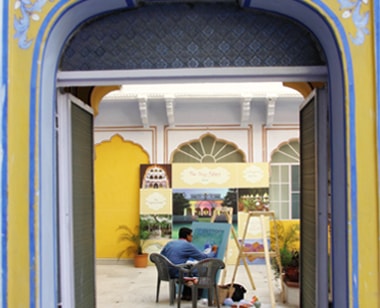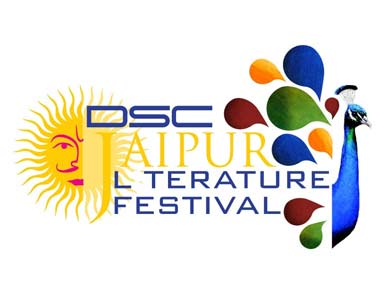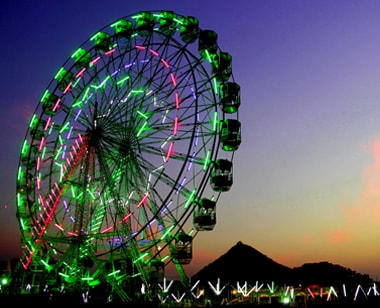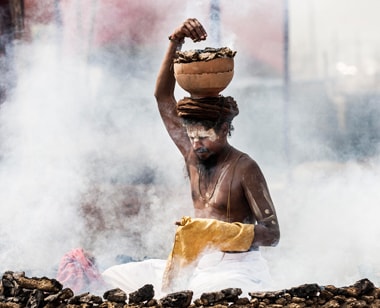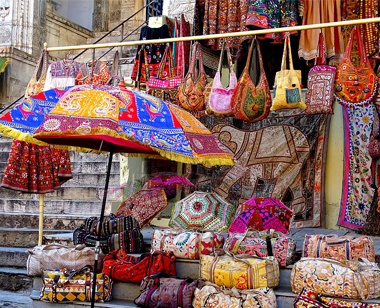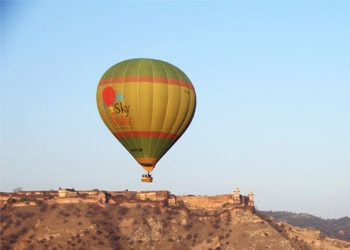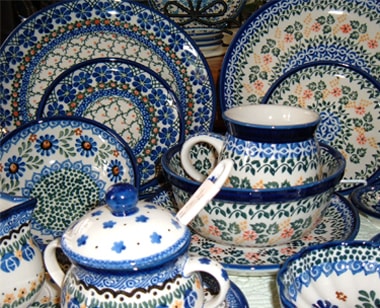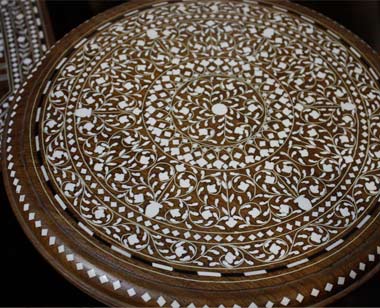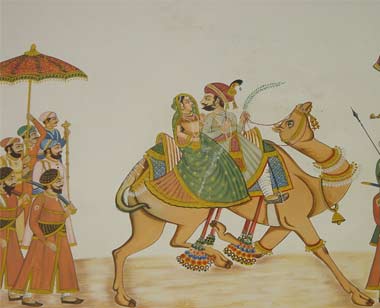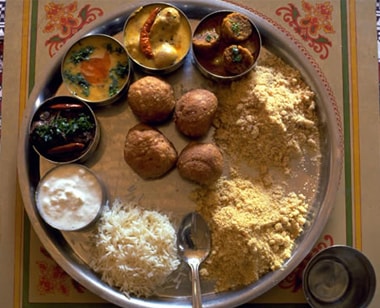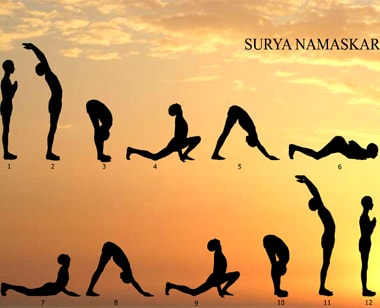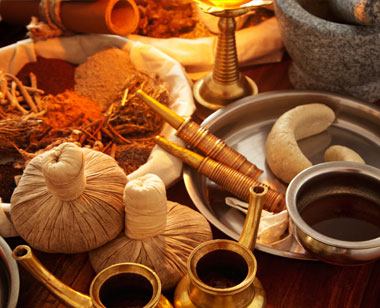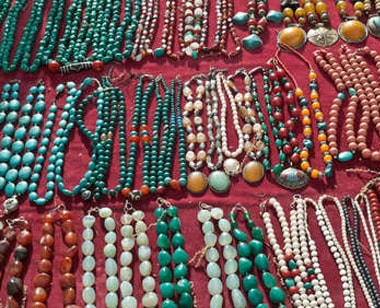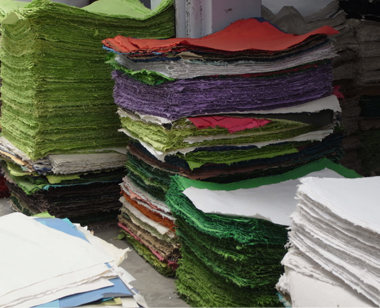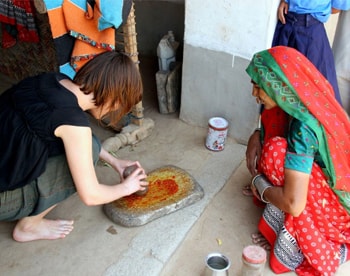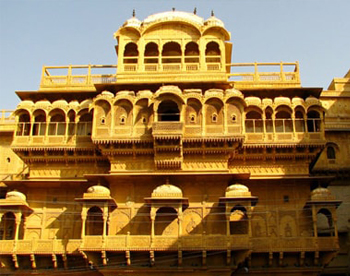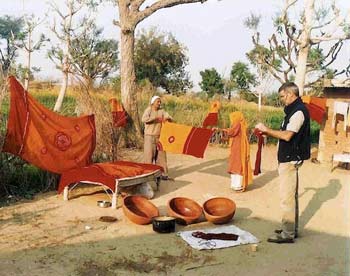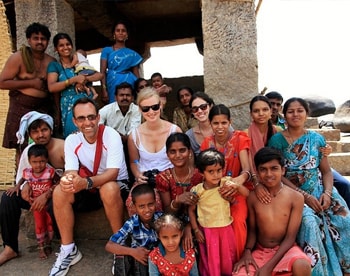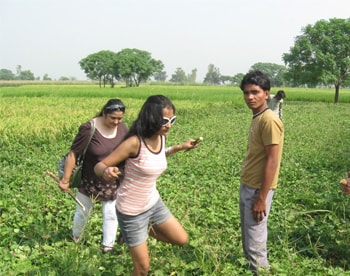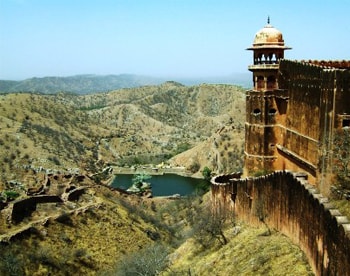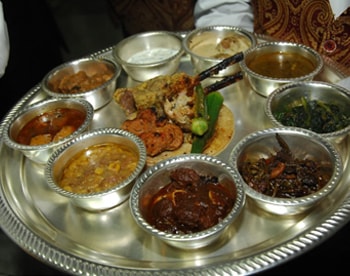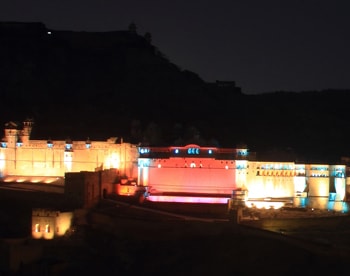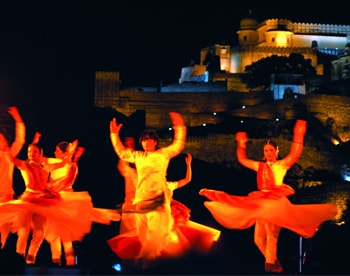Samode is a large town in Rajasthan, which belonged to the landlords known as ‘zamindars’ (in Hindi language) who were the principal thakurs of the state of Amber. It shot into prominence due to the thakurs lineage traced to Maharaja Rajveer Singh ji, the 17th prince of the house of Kacchwaha Rajputs.
Samode was bequeathed to Gopal Singh ji one of Rajveer Singh ji’s 12 sons. As a noble feudatory of the Amber and Jaipur,samode was, even then, considered a very rich town under the kingdom of Amber. Behari Das, a Rajput warrior who was then in Mughal service of the Nathawat clan inherited the Zamindari of Samode. It was under the British Rule that it was restored to the Nathawat clan with the hereditary title ‘Rawal Saheb’ or ‘Maha Rawal’ (title conferred for their valiance and loyalty to the royal family), in 1757, and this lineage is continued to this date
Samode Palace
Samode Palace was initially built in the sixteenth century as a Rajput fort, but in the early 19th century, under the nobleman Rawal Berisal, it was converted from a fort into an exquisitely designed palace in Rajput and Muslim architectural style. Rawal Berisal, during this time also served as the Chief Minister of Rajasthan and exercised full powers. He was signatory, on behalf of the Maharaja of Jaipur, to the treaty signed in 1818 with the British East India Company, which gave it the status of a protectorate to Jaipur. Rawal Sheo Singh, descendent of Rawal Berisal, who was the Prime Minister of Jaipur state for several years, during the middle of the 19th century, further expanded the Palace by adding the Darbar Hall (considered as “extravagantly florid and hand painted”) with a gallery and the Sheesh Mahal or the hall of mirrors. In 1987, it was converted into the heritage “Samode Palace Hotel”
Samode haveli was built by Rawal Sheo Singh more than 150 years ago. It was built as a resort for the royal family.
Samode Bagh or Samode garden was landscaped more than 150 years ago by one of the sons of Maharaja Prithiraj Singhji of Jaipur. It was patterned on the lines of Mughal gardens, which the Mughals had developed in other parts of their kingdom as a retreat for relaxation and enjoyment. The royal family of Samode also established a similar garden 4 kilometres away from their Samode Palace
Geographically, the three monuments and the village of Samode and its structures are in the pristine hill range of the Aravalli Range in north-western India
The three heritage structures are:
Samode palace
The left Decorative Arch and The Right Palace bathroom
The palace, built by the noblemen of the court of the royal family, is located near the Samode village on the outskirts of Shekhawat. It is built of sandstone at the foot of the Aravalli range of hills with a fortress like setting. The interiors of the palace are composed in the ancient architecture of Rajasthan: marble floors, intricately ornamented pillars, mosaic walls (with tiny pieces of small inlaid stones), with luxurious carpets, and decorated with old wall paintings (hunting scenes, floral motifs and so forth). At the entrance gate of the palace is a unique piece of a large sized treasure chest made of dark wood with marble settings and gleaming glass. The Sheesh Mahal (Hall of Mirrors) is located on the southern side of the palace.[3][9] The frescoes in the Durbar hall and in the Sultan Mahal are said to be 250 years old.[2] The palace is built on three levels (planned in a sequence of courtyards of increasing height) with a patio on each floor. There is an old ruined fort above the palace from where a panoramic view of the valley could be seen. The fort area is overgrown with vegetation but stone paved paths have been built to reach the fort heights.[5][10] Samode fort was the former residence of the Maharaja. It is said that an underground passage links it to the palace that provided access at times of emergency. It is now approached by a well laid out stone paved path (300 steps). There is also an entry gate to the ruined fort. Two other forts close by complete the circuit of a circular walk from and back to the palace. There is also a small temple, 3 kilometres away from the fort.
The Samode village near the palace is noted for its cloth made by block printing and also for handicrafts such as bangle making. There is a small artists’ colony in the village where miniature paintings are made.
Samode haveli
Left:Entrance arch. Right:Haveli lounge.
The haveli is built facing north. It has an elegant painted dining room and an airy passage. It has a unique ambiance of the historic juxtaposed against a contemporary setting. An elephant ramp, specially constructed at the entrance to the haveli, was laid in 1940 on the occasion of the marriage ceremony of a member of the Royal family
Samode Haveli, Jaipur
An urban oasis in the historic walled city of Jaipur, Samode Haveli is a traditional Indian mansion set in a verdant garden with apartments arranged around a series of intimate couryards. Built 175 years ago as a residence of the rulers of Samode, it is still occupied by their descendants, who have converted their home into a luxury hotel.
Samode bagh
Samode Bagh, or garden, a 16th-century Mughal style garden, enclosed by a 15 feet (4.6 m) high wall is spread over an area of 20 acres It also has 44 sandbank coloured tents with air-conditioning to accommodate visitors. It blends traditional Rajasthan and Mughal décor with the Victorian style, with modern facilities. It has a 200 feet (61 m) long water channel with a row of fountains that are fed by springs and wells. The tent walls also depict elegant paintings in Mughal art. The tents have been furnished with carpets, standing lamps and well designed beds and chairs and other modern facilities. There is also a 150 year old pavilion within the precincts of the garden.
* kindly double check the exact travel distance & the train/flight timing with us in case of any last minute changes.
 +919828167660, +919414075013
+919828167660, +919414075013

